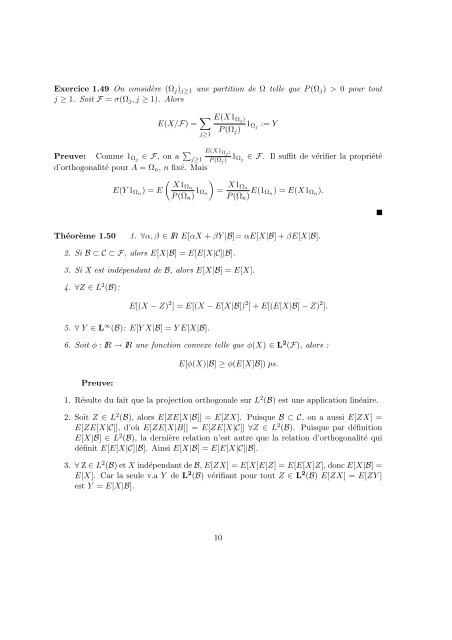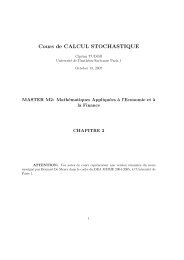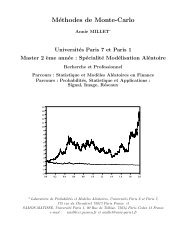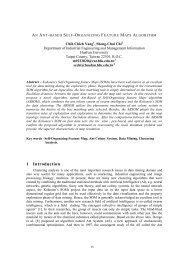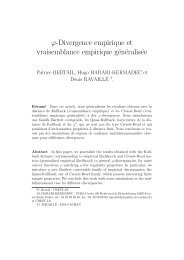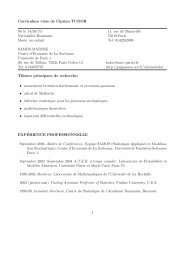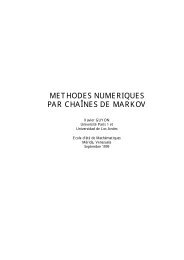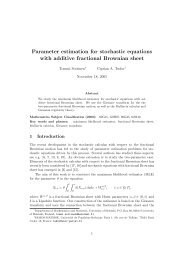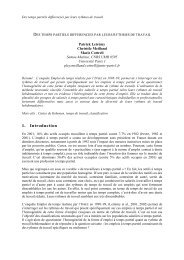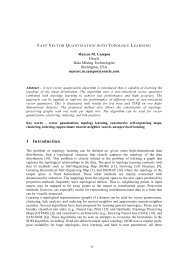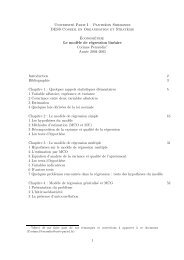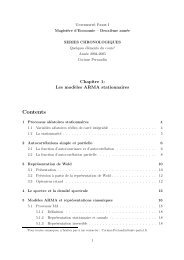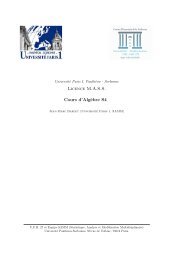You also want an ePaper? Increase the reach of your titles
YUMPU automatically turns print PDFs into web optimized ePapers that Google loves.
Exercice 1.49 On considère (Ω j ) j≥1 une partition <strong>de</strong> Ω telle que P (Ω j ) > 0 pour toutj ≥ 1. Soit F = σ(Ω j , j ≥ 1). AlorsE(X/F) = ∑ j≥1E(X1 Ωj )P (Ω j ) 1 Ω j:= YPreuve: Comme 1 Ωj ∈ F, on a ∑ E(X1 Ωj )j≥1 P (Ω j )1 Ωj ∈ F. Il suffit <strong>de</strong> vérifier la propriétéd’orthogonalité pour A = Ω n , n fixé. Mais( )X1ΩnE(Y 1 Ωn ) = EP (Ω n ) 1 Ω n= X1 Ω nP (Ω n ) E(1 Ω n) = E(X1 Ωn ).Théorème 1.501. ∀α, β ∈ IR E[αX + βY |B]= αE[X|B] + βE[X|B].2. Si B ⊂ C ⊂ F, alors E[X|B] = E[E[X|C]|B].3. Si X est indépendant <strong>de</strong> B, alors E[X|B] = E[X].4. ∀Z ∈ L 2 (B):E[(X − Z) 2 ] = E[(X − E[X|B]) 2 ] + E[(E[X|B] − Z) 2 ].5. ∀ Y ∈ L ∞ (B): E[Y X|B] = Y E[X|B].6. Soit φ : IR → IR une fonction convexe telle que φ(X) ∈ L 2 (F), alors :Preuve:E[φ(X)|B] ≥ φ(E[X]B]) ps.1. Résulte du fait que la projection orthogonale sur L 2 (B) est une application linéaire.2. Soit Z ∈ L 2 (B), alors E[ZE[X|B]] = E[ZX]. Puisque B ⊂ C, on a aussi E[ZX] =E[ZE[X|C]], d’où E[ZE[X|B]] = E[ZE[X|C]] ∀Z ∈ L 2 (B). Puisque par définitionE[X|B] ∈ L 2 (B), la <strong>de</strong>rnière relation n’est autre que la relation d’orthogonalité quidéfinit E[E[X|C]|B]. Ainsi E[X|B] = E[E[X|C]|B].3. ∀ Z ∈ L 2 (B) et X indépendant <strong>de</strong> B, E[ZX] = E[X]E[Z] = E[E[X]Z], donc E[X|B] =E[X]. Car la seule v.a Y <strong>de</strong> L 2 (B) vérifiant pour tout Z ∈ L 2 (B) E[ZX] = E[ZY ]est Y = E[X|B].10


